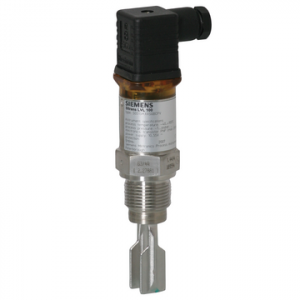Level Gauges
- System Solutions
- Gas Analysis
- Liquid Analysis
- Flowmeters
- Pressure Gauges
- Level Gauges
- Temperature Gauges
- Laboratory Analysis
- Data Loggers
- Regulators
More information
What a level gauge does
A level gauge measures the degree of filling in a container or sieve, either continuously
(gives an analogue value 0-100 %) or as point level (high/low alarm).
The choice of technology depends on the medium (liquid/solid), dielectric constant,
temperature, pressure, vapours, foam, etc. The five demanded are described below
methods, their working principle, strengths, limitations and typical
uses.
Guided Wave Radar (GWR)
- Principle: A short microwave pulse is sent down a probe (rod or wire).
The pulse is reflected at the interface between two media; the time difference gives the level
(Time-Domain-Reflectometry). - Advantages:
- Accurate ±2-5 mm, independent of pressure, temperature and vapour.
- Works well at low εr-values and can measure interfaces (e.g. oil/water).
- Requires no air-free zone above the level - can be mounted in narrow towers or standpipes.
- Restrictions:
- The probe is in contact with the process → risk of coating, abrasion or tensile forces when moving bulk materials.
- Maximum length about 40 m; requires variant with weight for powder.
- Typical applications: Separators, narrow columns, LNG tanks, sludge in sewage plants.
Level switches (point level switches)
- Objective: Provides only 'on/off' signal for overfill protection, dry running alarm, pump control.
- Common technology: Vibrating fork, float, capacitive, rotating paddle, magnetostrictive, optical, RF admittance.
- Strengths: Cheap, simple, often SIL rated for safety circuits.
- Restrictions: No continuous output signal; each instrument covers only one fixed alarm level.
Radar (free-radiating, 24-80 GHz)
- Principle: Antenna transmits microwave pulses or FMCW sweeps; the time/frequency shift of the reflection indicates the distance to the surface. No contact with the product.
- Advantages:
- Withstands high pressures (>160 bar) and temperatures (>400 °C).
- Barely affected by dust, vacuum or aggressive chemicals.
- Newer 80 GHz sensors have narrow beam → small dead zone and can be mounted close to wall.
- Restrictions:
- Weak economy at very low εr (<1.7) or thick foam.
- Requires clear view - internal struts or stirrers may produce false echoes (managed with echo cancellation).
- Typical applications: Crude oil tanks, asphalt, cement silos, biogas reactors.
Ultrasound
- Principle: The transducer transmits a sound pulse (20-65 kHz) towards the surface and measures the echo time; the speed of sound in air is assumed or compensated.
- Advantages:
- Completely non-contact and cost-effective for water, sewers and open channels.
- Easy installation - no pressure feedthroughs.
- Restrictions:
- Sensitive to temperature gradients, fog, heavy foam or strong vapours that attenuate sound.
- Limited range (usually ≤15 m) and needs free surface above the liquid.
- Typical applications: Pumping stations, separators, grain silos (with dust protection).
Continuous capacitive level measurement
- Principle: The probe and the tank wall form a condenser. As the height increases, the
the dielectric constant in the gap; the capacitance - and thus the output signal - changes proportionally. - Advantages:
- Simple, robust, no moving parts; works in pressurised vessels.
- Low power consumption and good for low levels in small vessels.
- Can be designed for both conductive and non-conductive liquids and powders.
- Restrictions:
- Requires calibration against the medium εr; changes (temperature, recipe) can drive the measurement.
- Coatings on the probe give errors; insulated probes or RF admittance reduce the problem.
- Typical applications: Glue silos, plastic granules, acids/bases where radar is problematic due to low dielectricity.




